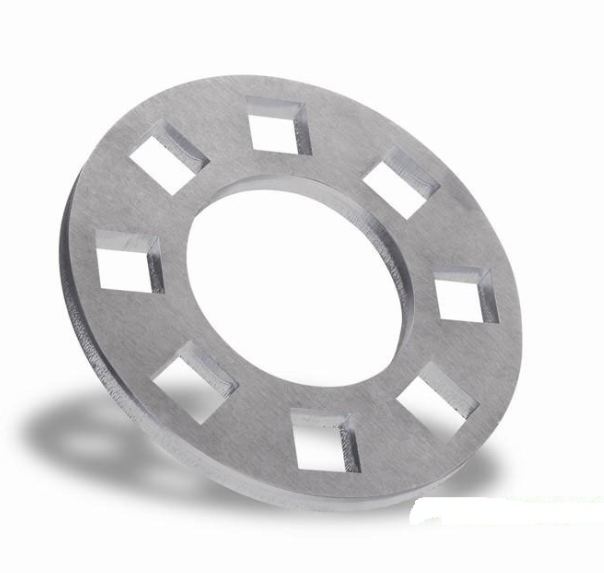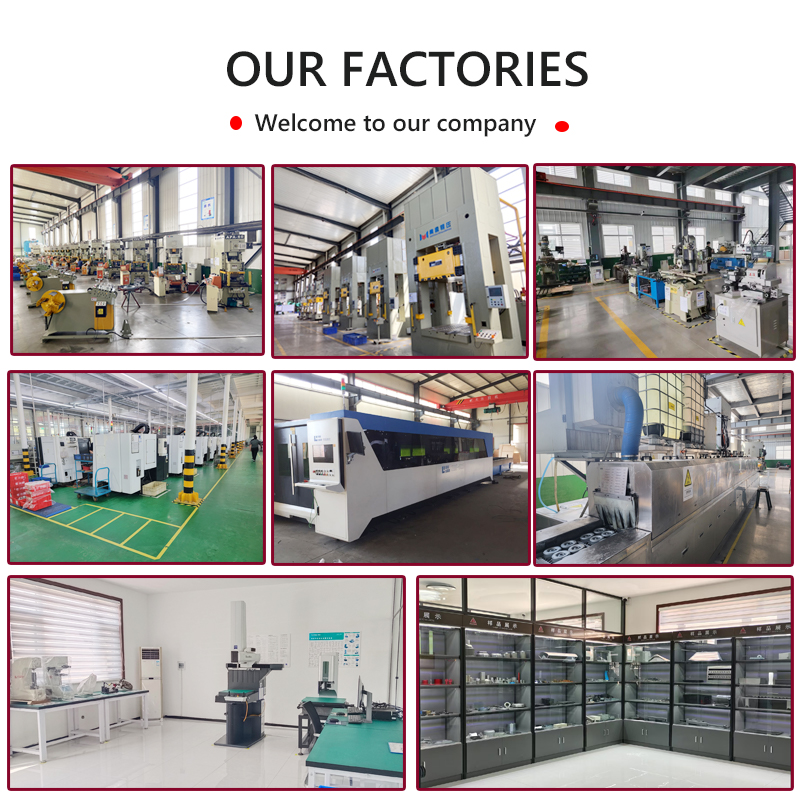Causes and improvement measures for bending deformation of stamping hardware:
Poor plasticity of steel: including low elongation of steel, uneven grain size, harmful Widmanstatten structure, cold bending performance not meeting technical standards, and poor surface quality (scratches, rust, etc.), all of which lead to reduced plasticity and cause cracking during bending.
The angle between the bending line and the corrugation direction of the sheet does not meet the regulations: during layout, the angle between the bending line and the corrugation direction of the sheet does not meet the process regulations.
The bending radius is too small: the deformation degree of the outer metal exceeds the deformation limit during bending.
Poor quality of the shearing and punching section of the blank: such as large burrs, or cracks in the sheet at the bending part.
The radius of the mold corner is worn or the gap is too small: the surface roughness of the die (high roughness) or improper design structure cause large feeding resistance, which is easy to crack the workpiece.
Insufficient lubrication: Insufficient lubrication will cause greater friction and easy to crack. Severe over-tolerance of material thickness Over-tolerance of size will cause difficulty in feeding and cracking.
Poor pickling quality: Failure to seriously implement the steel pickling process will result in over-pickling or hydrogen embrittlement, resulting in reduced plasticity and cracking.
Improvement measures:
Improve steel plate conditions: mainly include selecting steel with good plasticity (such as good cold bending performance), local annealing at locations with large deformation, and improving the cross-sectional quality of shear (punching) blanks.
Improve the technical status of the working part of the mold: mainly reduce the roughness of the working surface of the male and female molds and adjust the reasonable gap.
Improve lubrication conditions: Reasonable lubrication, and use lubricants with good lubrication performance to reduce the resistance of steel flow during bending.
Formulate the correct process plan: Select an appropriate process plan to make the steel flow resistance small and easy to deform during bending.
Improve the processability of the product structure: Select a reasonable fillet radius and add process cuts to the local bending parts to avoid root fracture.
Check whether the blank positioning is reliable: The reliability of the pressing device and positioning device used in the mold structure has a great influence on the shape and dimensional accuracy of the bent part. Generally, the bending mold uses air cushions, rubber or springs to generate the clamping force, but the sheet should be clamped before the bending begins. The blank positioning forms are mainly based on the shape and the hole. The shape positioning operation is convenient, but the positioning accuracy is poor. The hole positioning operation is not very convenient, the scope of use is narrow, but the positioning is reliable.
Check whether the bending process sequence is correct: when there are many bending workpieces, and the order of the process before and after is not arranged correctly, it will also have a great impact on the accuracy. For example, for bent parts with holes, when the shape and position accuracy of the holes are required to be high, the processing technology of bending first and then punching should be adopted.
Check whether the thickness of the bending material used is uniform: during the bending process, if the thickness of the material used is uneven, it is easy to move the bent material due to the influence of uneven extrusion deformation, resulting in unstable height dimensions of the bent part.
Check whether the radius of the bending die at both ends of the mold is uniform: During the long-term use of the bending die, the radius of the die corners often changes, and the radius of the left and right die corners are asymmetrical, which causes the bending part to move during the bending process and causes the bending size to change. The solution is: repair the radius of the die corners to be qualified, and make it symmetrical and consistent in size.
Check whether the tonnage and air cushion pressure of the press meet the requirements: the tonnage and air cushion pressure of the press will directly affect the dimensional accuracy of the bending part. Generally, a press with a larger tonnage and higher precision should be selected. It is usually more appropriate to take the processing force of 70%-80% of the tonnage of the press.
Check and recheck whether the bending unfolding material is correct: whether the bending part unfolding material is correct directly affects whether the size of the bending part is appropriate.
Check whether the positioning parts are worn: the correctness of the positioning part size directly affects whether the size of the bending part is qualified.
Check and adjust the bending gap of the bending die to be uniform: whether the bending die gap is uniform directly affects the dimensional accuracy of the bending part. Uneven gaps will cause the bent piece to move during the bending process, thus affecting the bending dimensions of the bent piece.
- Xisanli Village,Nanpi County, Cangzhou City, Hebei Province, China



